Abstract
A modified Mantel-Haenszel analysis of data from the Oxford Survey of Childhood Cancers has shown that cases associated with foetal irradiation (X-rayed cases) accounted for a higher proportion of deaths between 5 and 10 years than of earlier or later deaths. This finding is compatible with somewhat later origins for the cancers actually caused by the radiation exposures (radiogenic cases) than for other (idiopathic) cases which proved fatal before 10 years of age. Therefore the usual time for incurring congenital anomalies (or the first trimester of foetal life) could be the commonest time for initiating childhood cancers. The theoretical implications of this and other findings of the Oxford Survey are discussed within the framework of a theory which assumes that all mutant cells have cancer potentialities and that defects in the immune surveillance mechanism favour multiplication of these cells (or endogenous sources of self-replicating foreign proteins) as well as live pathogens (or exogenous sources of self-replicating foreign proteins).
Full text
PDF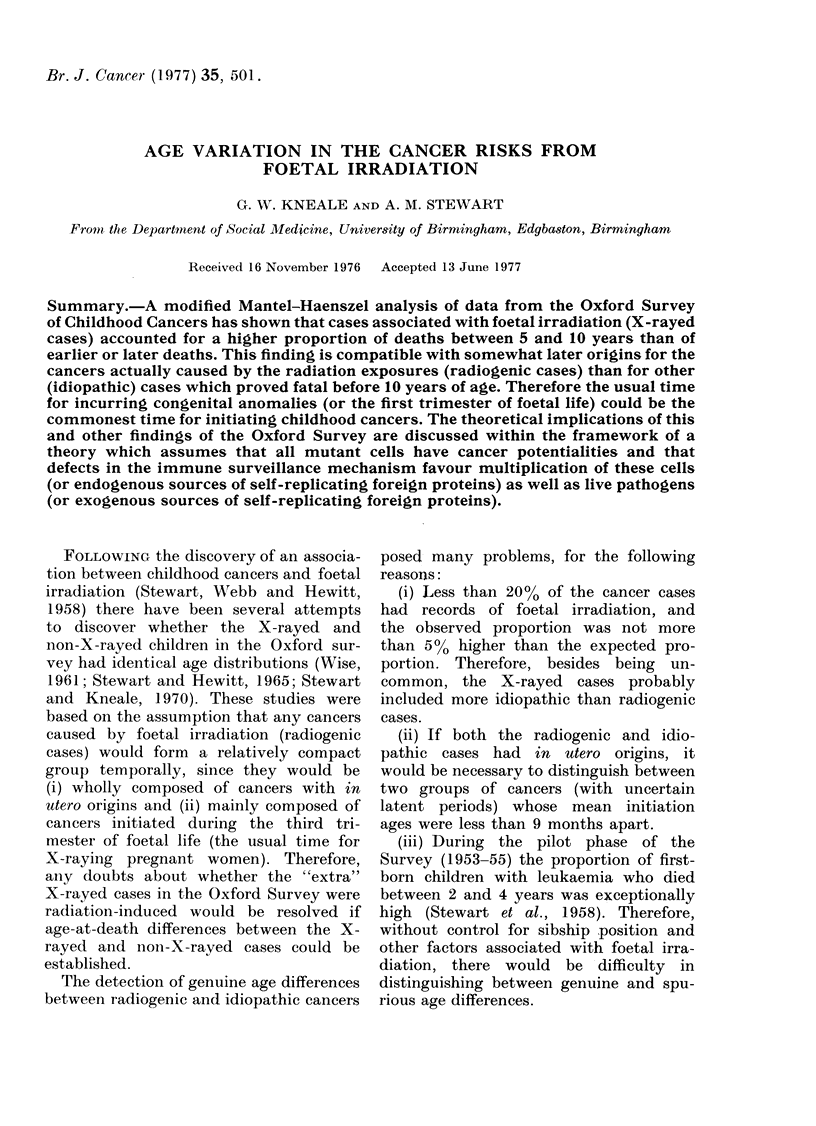
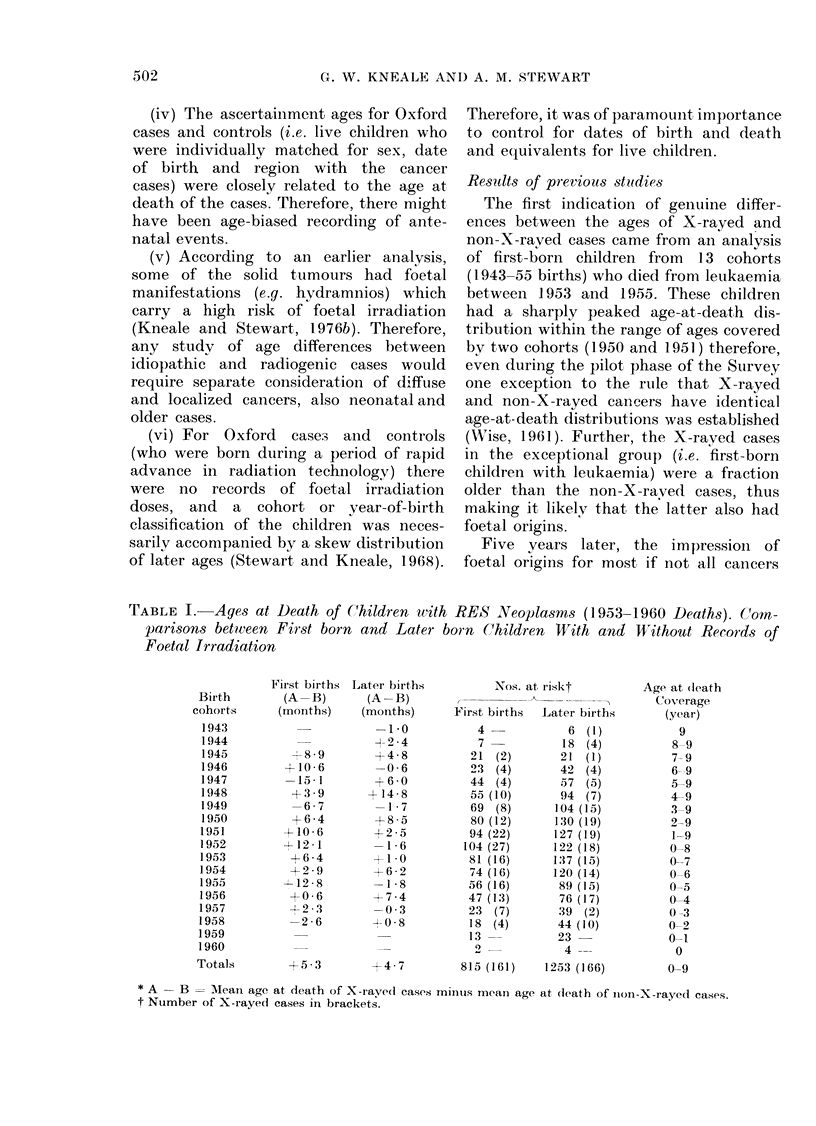
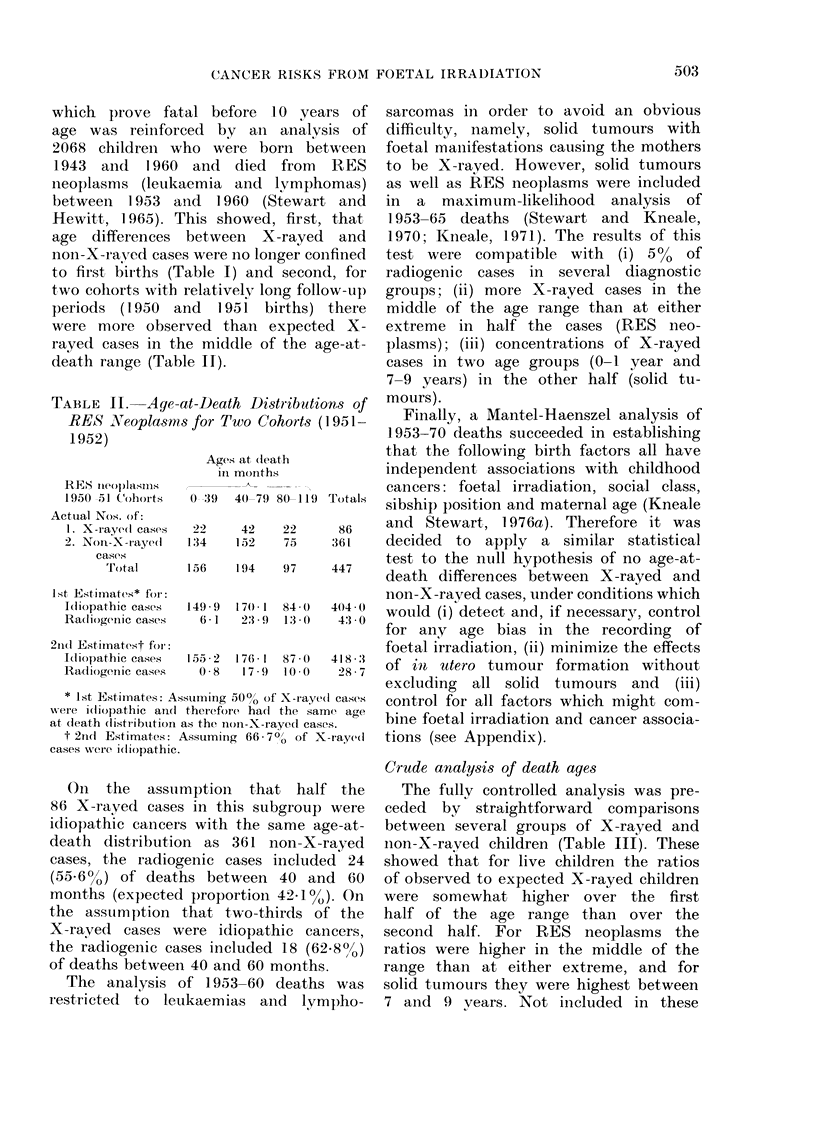
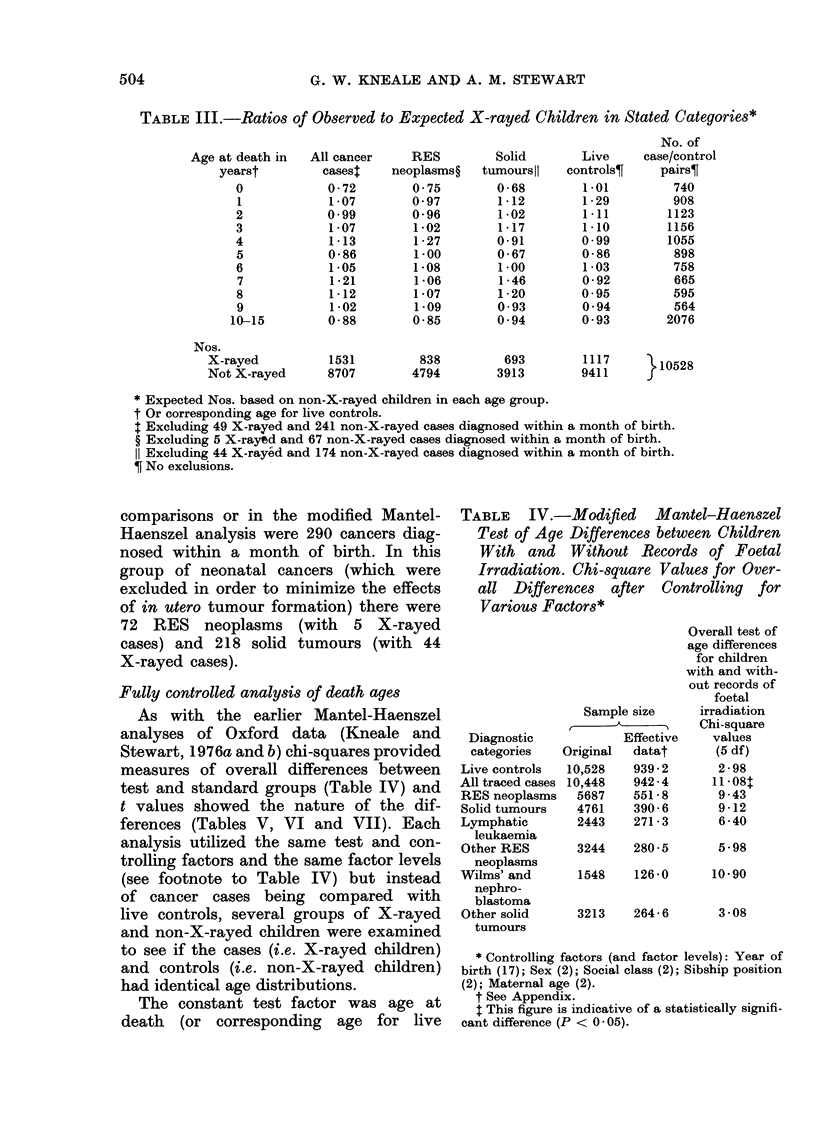
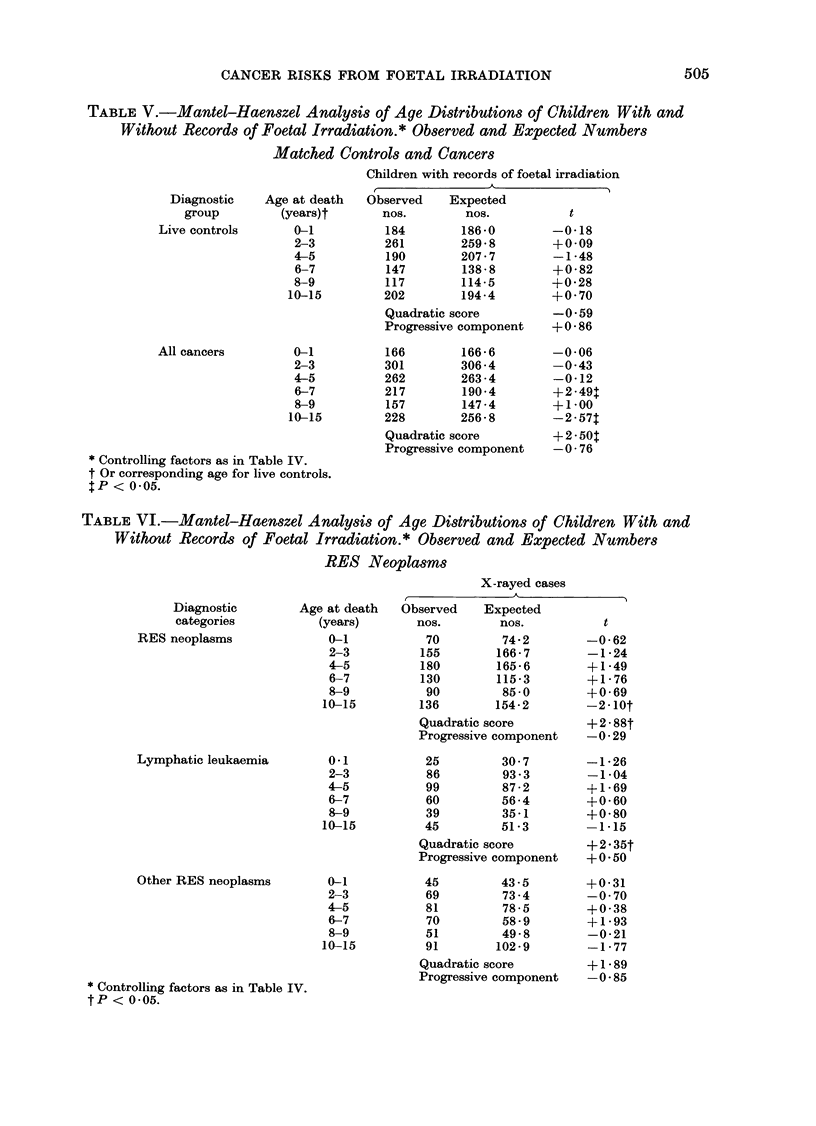

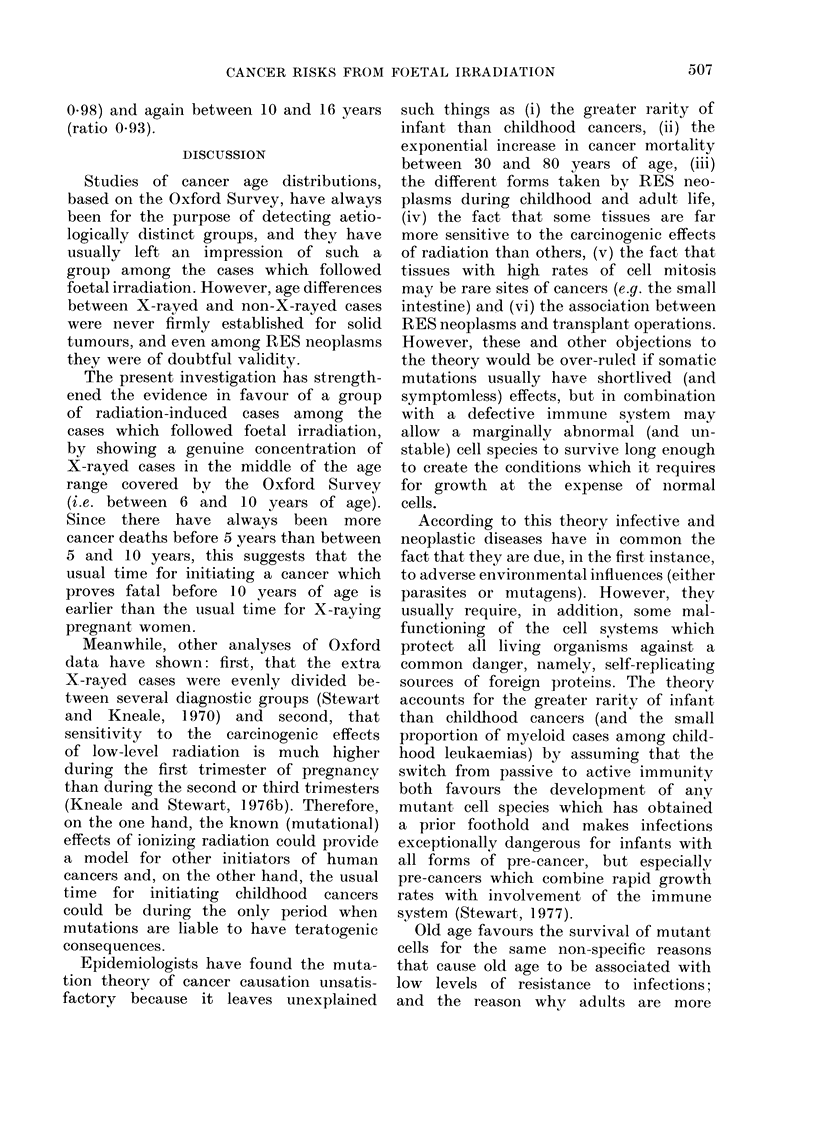
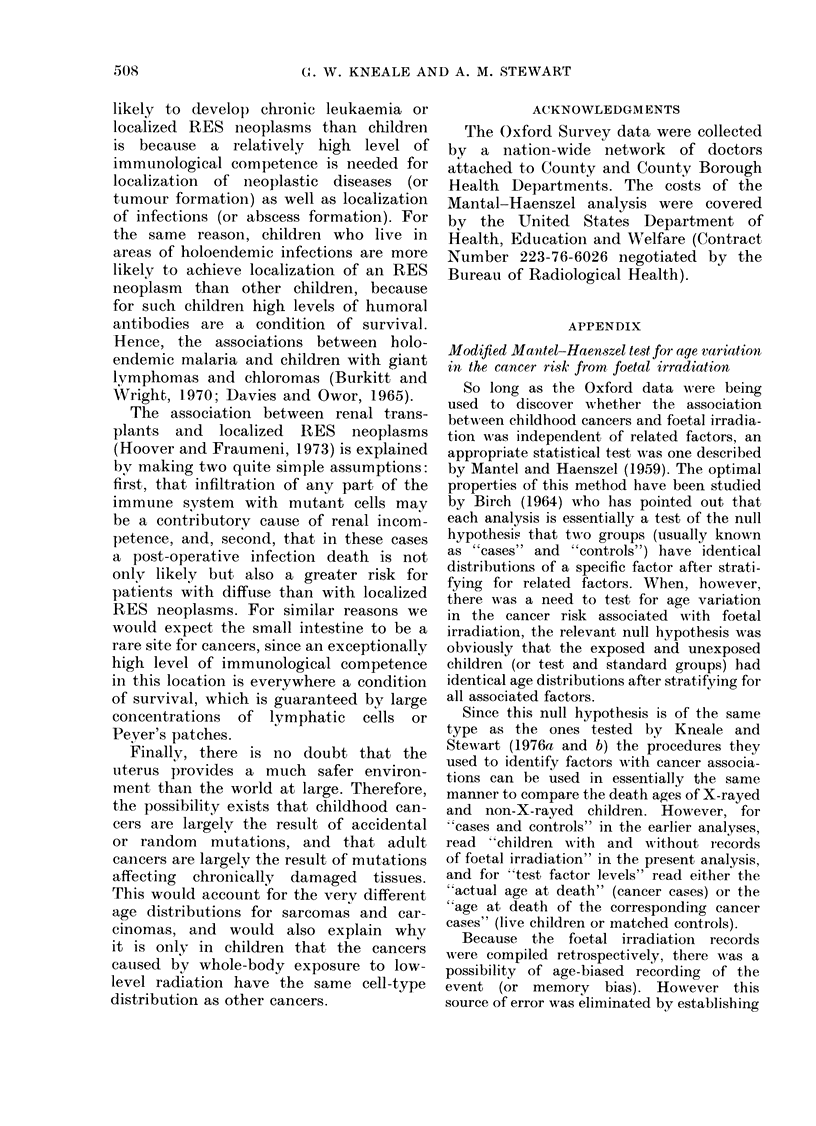
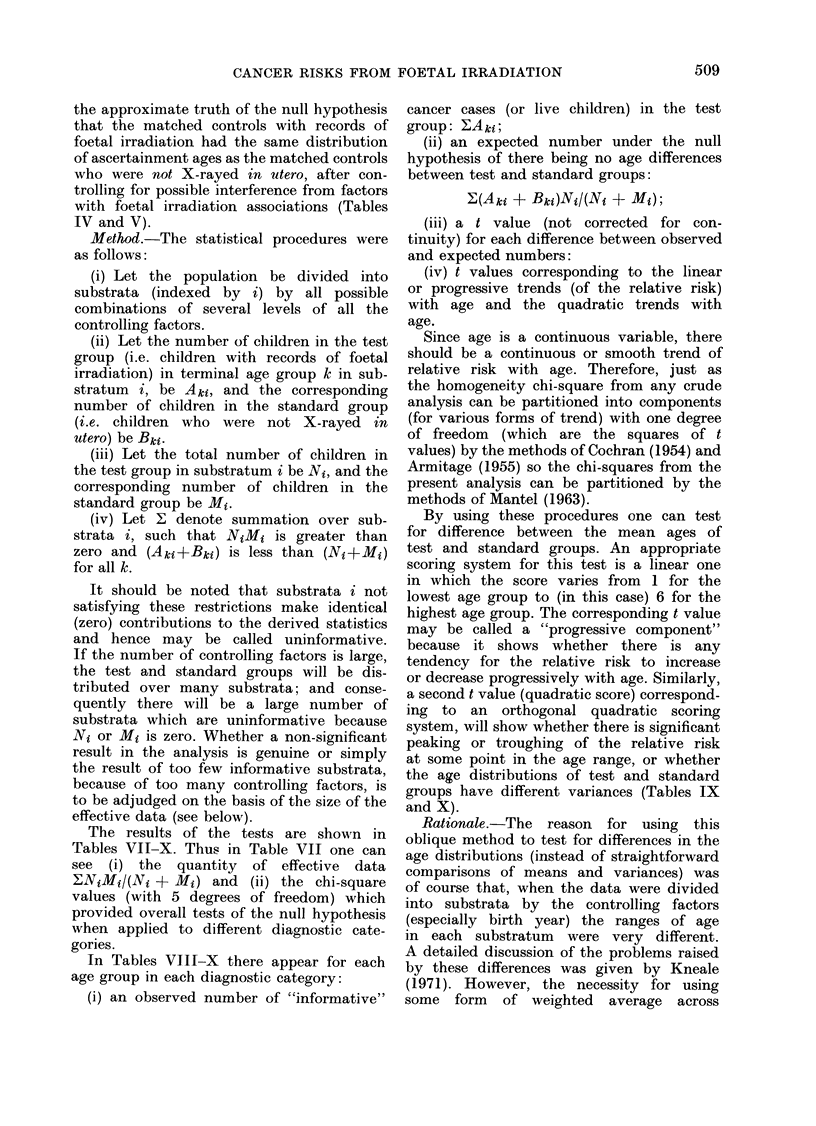
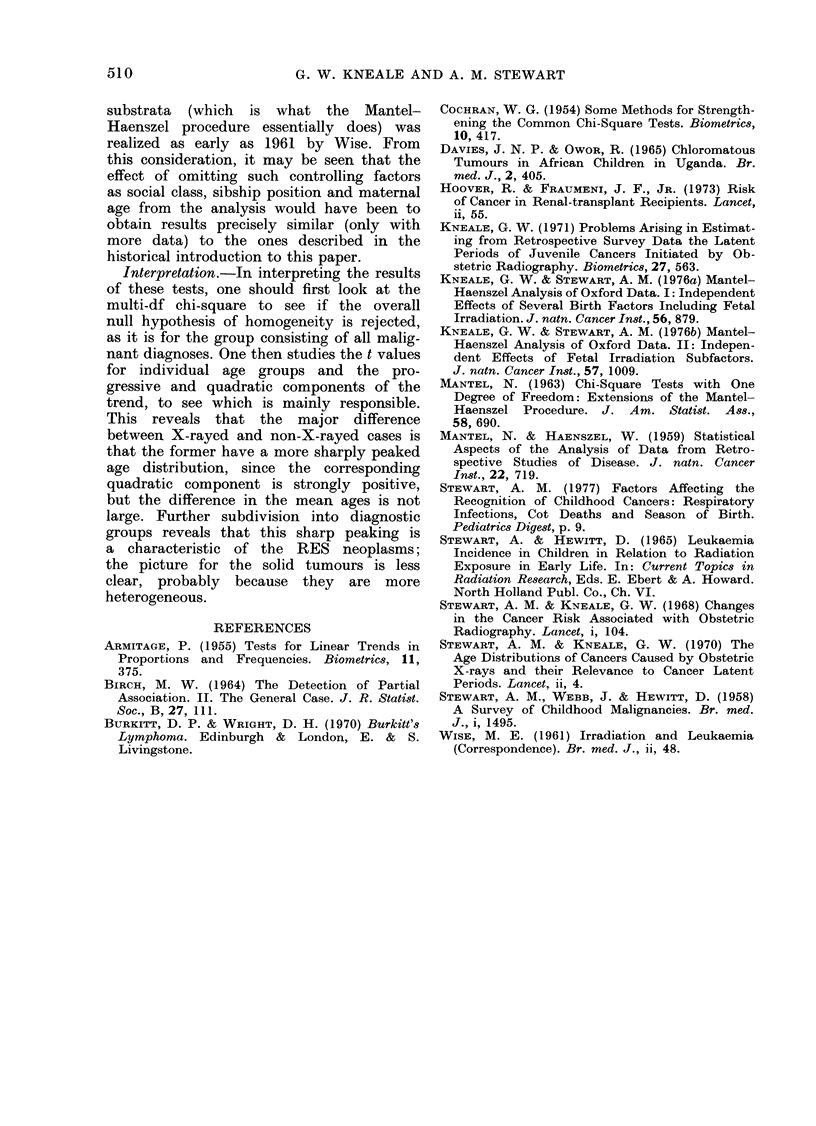
Selected References
These references are in PubMed. This may not be the complete list of references from this article.
- DAVIES J. N., OWOR R. Chloromatous tumours in African children in Uganda. Br Med J. 1965 Aug 14;2(5458):405–407. doi: 10.1136/bmj.2.5458.405. [DOI] [PMC free article] [PubMed] [Google Scholar]
- Hoover R., Fraumeni J. F., Jr Risk of cancer in renal-transplant recipients. Lancet. 1973 Jul 14;2(7820):55–57. doi: 10.1016/s0140-6736(73)93256-x. [DOI] [PubMed] [Google Scholar]
- Kneale G. W. Problems arising in estimating from retrospective survey data the latent periods of juvenile cancers initiated by obstetric radiography. Biometrics. 1971 Sep;27(3):563–590. [PubMed] [Google Scholar]
- Kneale G. W., Stewart A. M. Mantel-Haenszel analysis of Oxford data. I. Independent effects of several birth factors including fetal irradiation. J Natl Cancer Inst. 1976 May;56(5):879–883. doi: 10.1093/jnci/56.5.879. [DOI] [PubMed] [Google Scholar]
- Kneale G. W., Stewart A. M. Mantel-Haenszel analysis of Oxford data. II. Independent effects of fetal irradiation subfactors. J Natl Cancer Inst. 1976 Nov;57(5):1009–1014. doi: 10.1093/jnci/57.5.1009. [DOI] [PubMed] [Google Scholar]
- MANTEL N., HAENSZEL W. Statistical aspects of the analysis of data from retrospective studies of disease. J Natl Cancer Inst. 1959 Apr;22(4):719–748. [PubMed] [Google Scholar]
- STEWART A., WEBB J., HEWITT D. A survey of childhood malignancies. Br Med J. 1958 Jun 28;1(5086):1495–1508. doi: 10.1136/bmj.1.5086.1495. [DOI] [PMC free article] [PubMed] [Google Scholar]
- Stewart A. M., Kneale G. W. Age-distribution of cancers caused by obstetric x-rays and their relevance to cancer latent periods. Lancet. 1970 Jul 4;2(7662):4–8. doi: 10.1016/s0140-6736(70)92472-4. [DOI] [PubMed] [Google Scholar]
- Stewart A., Kneale G. W. Changes in the cancer risk associated with obstetric radiography. Lancet. 1968 Jan 20;1(7534):104–107. doi: 10.1016/s0140-6736(68)92719-0. [DOI] [PubMed] [Google Scholar]


